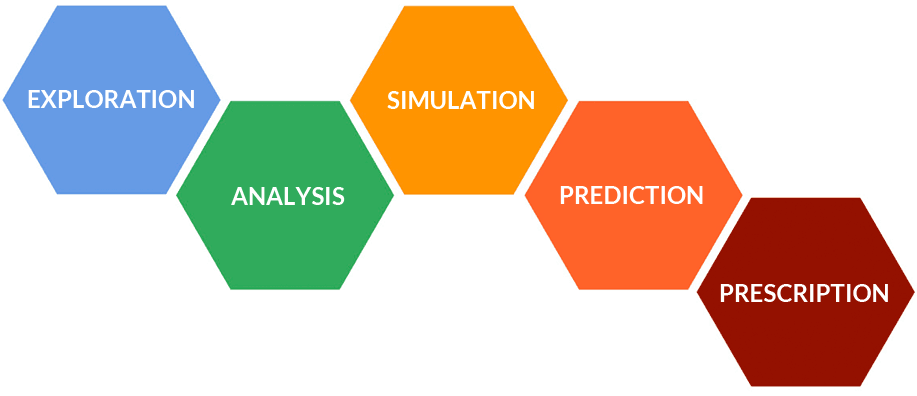Our Approach
Data to Information for Intelligent Decision Making
iGloble uses a 5 step process (EASPP) to create data networks in order to build information linkages for intelligent decision making. The steps are illustrated below.

iGloble uses a 5 step process (EASPP) to create data networks in order to build information linkages for intelligent decision making. The steps are illustrated below.


This is a consultative approach to understand the various components of the data leading to initial level of analysis. This helps in identifying data elements that will be used for connectivity and information building.

Data Envelopment Analysis methodology is adopted for evaluating the performance of the data for the identified business processes. DEA is a very powerful service management and bench marking technique to evaluate and helps identify new paths in the development networks for efficiency improvements.
Using linear programming techniques and Theory of Constraints, we are able to identify the most important limiting factor (i.e. constraints) that stands in the way of achieving a goal and then systematically improving that constraint until it is no longer the limiting factor.

Identifying the scenarios that can show the impact and simulating the same is a critical step in this EASPP process. iGloble's Simulation Framework uses statistical methodologies to run the simulations. At the end you get to see results without actually going through the exercise.

Prediction is based on two critical items, i.e., historical trending and the correlation analysis in the data networks. iGloble's Connected Platform analyzes the trend and correlations to create the right predictions. This is made available to the management teams for the proactive decision making using the simulation outputs.

As decision making is becoming complicated and confusing as there are far too many variables and constraints, iGloble's prescriptive model is the right tool to deliver the right prescriptions to the decision makers.